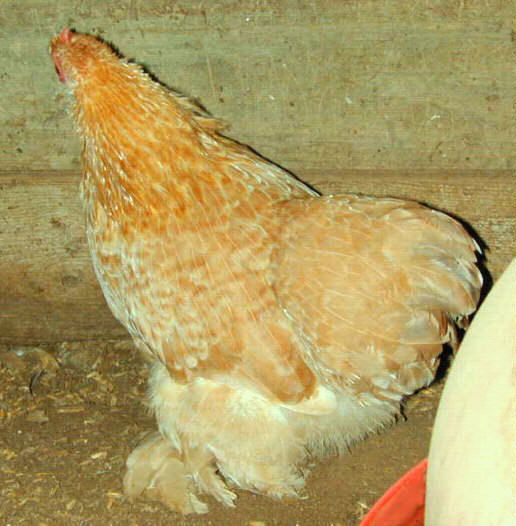Quote:
He has only one barring gene so, statistically, you ought to get in the region of 50% barred birds (of whatever colour) & 50% non barred.
He is, presumably, a normal black barred crossed with another colour. There is linkage, though not close, between silver & barring, so this might be affecting the results. As you are getting some reds & some buffs, if you keep hatching, sooner or later some of your reds or buffs will hatch barred (one barring gene). It can be difficult to see the lighter headspot in the light down of buff or red chicks. Also barring does not always express as well in reds & buffs as it does in blacks. It is usually most visible in the wings & thigh fluff.
Just keep hatching. You don't need to do anything else.
Barring is especially hard to get on the girls. Here is one of my young pullets. She has better barring than her mother. I hope it keeps improving.

He has only one barring gene so, statistically, you ought to get in the region of 50% barred birds (of whatever colour) & 50% non barred.
He is, presumably, a normal black barred crossed with another colour. There is linkage, though not close, between silver & barring, so this might be affecting the results. As you are getting some reds & some buffs, if you keep hatching, sooner or later some of your reds or buffs will hatch barred (one barring gene). It can be difficult to see the lighter headspot in the light down of buff or red chicks. Also barring does not always express as well in reds & buffs as it does in blacks. It is usually most visible in the wings & thigh fluff.
Just keep hatching. You don't need to do anything else.
Barring is especially hard to get on the girls. Here is one of my young pullets. She has better barring than her mother. I hope it keeps improving.


